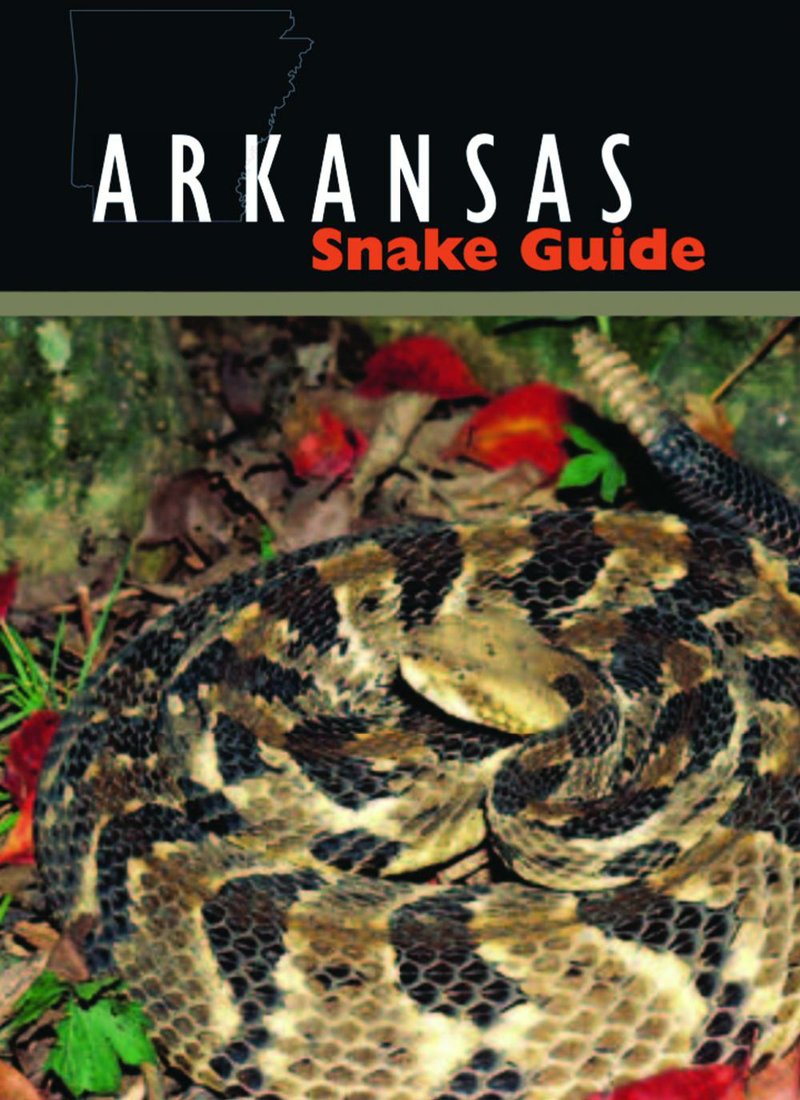The Arkansas Game and Fish Commission's Arkansas Snake Guide brochure describes the state's most common snakes, with photos. It's available at agfc.com under "Resources" and "Flyers and Brochures."
RELATED ARTICLES
http://www.arkansas…">Sssinuous friendshttp://www.arkansas…">Stay safe by knowing snakes' active periods
The most common venomous snakes seen in Arkansas are copperheads and cottonmouths, although the timber rattlesnake is a close third. The other three venomous species here are the Western diamondback rattlesnake, the Western pygmy rattlesnake and the coral snake.
These snakes are far less common than their nonvenomous counterparts like the various species of water snakes, woodland dwellers and mud snakes, doctoral student Jeremy Chamberlain said. Differentiating between the dangerous and the harmless can be tricky.
Though each species has its own individual characteristics, venomous snakes as a group have common traits. Pit vipers, which constitute five of the state's six venomous types, have heat-sensitive pits between their eyes and nostrils. If those eyes look villainous, it's probably venomous. Venomous snakes have vertical, catlike pupils, Chamberlain said, whereas most nonvenomous snakes have rounded pupils.
"But if you're close enough to see that it has an elliptical pupil," Jeremy Sloan said, "you're too close." Sloan is a presenter with the Arkansas Herpetological Society.
Most venomous snakes also have an angular, eyebrowlike ridge, whereas most nonvenomous snakes have rounded heads. The familiar guideline that an arrow-shaped head means venom isn't accurate. Some harmless snakes' heads are angular.
"The body shape is the big giveaway," Sloan said, sliding a long hook under a rather annoyed diamondback rattler. "These guys are short, they're stocky, they're thick, they're fat."
With the exception of the venomous coral snake, which is skinny and banded in bright colors, venomous snakes tend to be dull and drab.
The coral snake's color is a series of red, black and yellow bands. Chamberlain noted there also are nonvenomous snakes in Arkansas with similar colored bands, but in a different order. Remember, "Red touch black, venom lack; red touch yellow, kill a fellow."
Rattlesnakes famously have an all too obvious signal -- the rattling band of buttons at the tip of the snake's tail, to warn off predators. Those buttons are hollow, interlocked segments that make noise when shaken. A rattlesnake grows a new button each time it sheds its skin, which is usually several times a year.
But it's not unheard of for a rattler to suffer some misadventure and lose its rattles, Sloan cautioned. Also, several of the nonvenomous snakes try to scare predators by thrashing their rattleless tails in dry leaves.
-- Clara Turnage and Celia Storey
ActiveStyle on 09/05/2016
